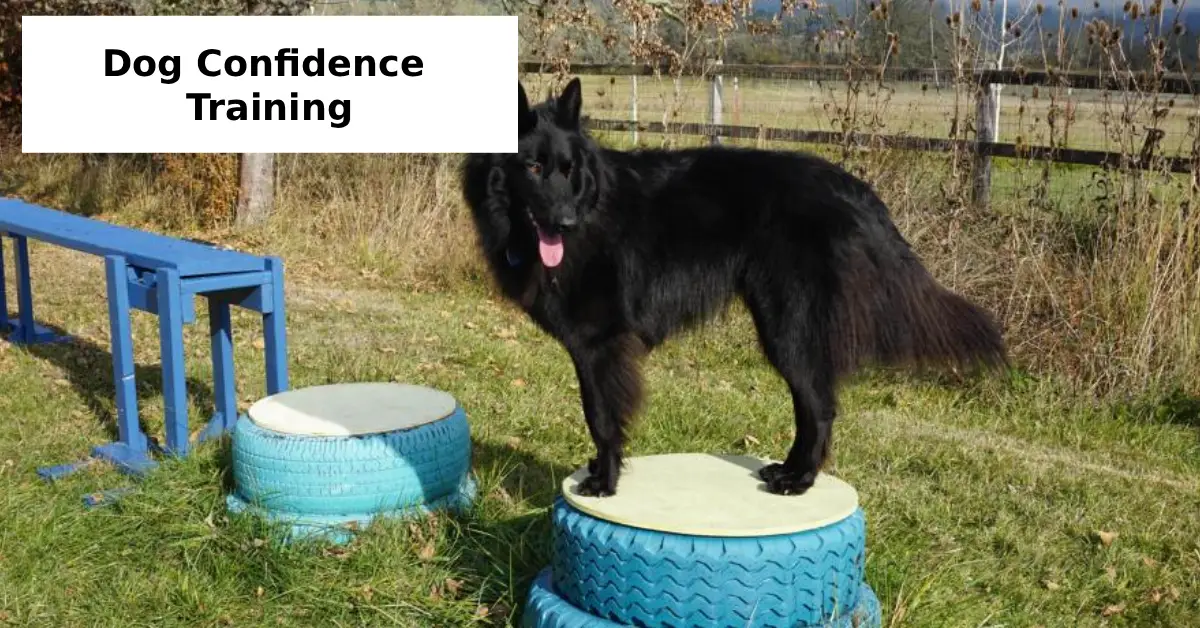Dogs, like humans, thrive on self-assurance. A confident dog is happier, calmer, and better equipped to handle life’s challenges. Dog confidence training is not just about teaching obedience; it’s about fostering trust, independence, and a strong emotional connection between you and your furry friend.
Whether you’re working with a shy rescue dog, a nervous puppy, or a dog recovering from trauma, building confidence will transform your relationship. In this guide, we’ll explore dog confidence training techniques, confidence exercises for dogs, and fun games to boost dog self-esteem—all backed by positive, science-based methods.
Why Dog Confidence Training Matters
A dog with low confidence might display behaviors like fear of strangers, hesitation around new environments, or even excessive barking. Over time, these anxieties can limit their quality of life. By focusing on dog confidence training, you help your pet:
- Explore the world without fear.
- Develop problem-solving skills.
- Build trust in you as their guide.
- Enjoy better social interactions.
Research from the American Kennel Club (AKC) emphasizes that confidence is a key factor in reducing stress-related behaviors in dogs. That means fewer behavioral issues and a stronger bond between you and your dog.
Signs Your Dog Needs Confidence Building
Recognizing the signs is the first step. Your dog may need dog confidence building if they:
- Avoid new people or animals.
- Flinch at sudden sounds or movements.
- Refuse to try new toys or activities.
- Stick too close to you in unfamiliar settings.
If these behaviors sound familiar, don’t worry—confidence is a skill that can be developed through consistent, gentle training.
Key Principles of Dog Confidence Training
When it comes to dog confidence training, the goal is to create positive experiences that gradually push your dog’s comfort zone without overwhelming them. Here are the three foundational principles:
1. Positive Reinforcement Confidence
Reward desired behaviors with treats, toys, or praise. By associating bravery with rewards, your dog learns that trying new things is fun.
2. Gradual Exposure
Also called desensitization confidence training, this involves introducing your dog to new situations in small, manageable steps.
3. Consistency and Patience
Confidence takes time. Short, frequent training sessions work better than overwhelming your dog with too much at once.
Dog Confidence Training Techniques You Can Try
Here are some proven dog confidence training techniques to incorporate into your daily routine:
1. Obstacle Courses
Create a simple agility setup at home. Use chairs, broomsticks, and cushions to encourage your dog to navigate different textures and spaces. This builds problem-solving skills and physical confidence.
2. New Environment Walks
Change up your walking route to introduce new smells, sights, and sounds. Start with quieter areas and work toward busier ones. This doubles as a way to reduce anxiety in dogs.
3. Confidence Building Games for Dogs
- Hide and Seek: Hide treats or toys and encourage your dog to find them.
- Tug-of-War: Builds physical strength and engagement.
- Puzzle Toys: Stimulates your dog’s brain while rewarding curiosity.
Canine Enrichment Activities for Confidence
Canine enrichment activities are sensory-rich tasks that keep your dog mentally and physically engaged. Examples include:
- Scent Work: Hide treats in boxes or under cups and let your dog sniff them out.
- Foraging Mats: Encourage natural hunting instincts.
- DIY Dog Training challenges like teaching a new trick weekly.
These activities not only entertain but also reinforce your dog’s ability to adapt and solve problems—critical components of confidence.
Desensitization Confidence Training for Nervous Dogs
If your dog is fearful of loud noises, grooming tools, or car rides, desensitization confidence training can help. This method involves:
- Identifying the Trigger – Understand what causes your dog’s fear.
- Low-Level Exposure – Introduce the trigger at a distance or volume where your dog remains calm.
- Pair with Positive Reinforcement – Reward your dog for staying relaxed.
Over time, your dog learns that the trigger is not a threat, reducing their anxiety.
Boost Dog Self-Esteem Through Positive Interactions
Low self-esteem in dogs often stems from negative experiences or lack of socialization. To boost dog self-esteem:
- Celebrate Small Wins – Reward even the smallest attempts at bravery.
- Use Gentle Guidance – Avoid force or punishment.
- Encourage Independence – Let your dog explore without constant direction.
Remember, dogs pick up on your emotions—if you’re calm and confident, they’re more likely to mirror your energy.
Confidence Exercises for Dogs at Home
You don’t need a professional setup to try confidence exercises for dogs. Here are a few you can start today:
- Step Up Game: Encourage your dog to step onto a low platform or bench.
- Tunnel Fun: Create a tunnel with blankets and furniture for them to crawl through.
- Balance Challenges: Use a cushion or wobble board to improve stability and focus.
These activities improve coordination while boosting your dog’s belief in their own abilities.
Dog-Training Confidence Tips from Experts
Professional trainers often share these dog-training confidence tips:
- Keep sessions short—5 to 10 minutes at a time.
- Always end on a positive note.
- Use high-value rewards (your dog’s favorite treat).
- Be consistent with cues and rewards.
For extra learning, consider joining a local training class where your dog can practice skills in a controlled environment.
When to Seek Professional Help
If your dog’s anxiety is severe or they’re showing signs of aggression, a certified trainer or veterinary behaviorist can design a tailored plan. Look for professionals who specialize in positive reinforcement confidence training and have experience with fear-based behaviors.
Maintaining Confidence Long-Term
Confidence is like a muscle—it needs regular exercise. Maintain progress by:
- Continuing enrichment activities.
- Trying new environments weekly.
- Revisiting past games and challenges.
- Offering praise for confident behavior, even in familiar settings.
Final Thoughts: Building a Lifelong Bond
Dog confidence training is more than a skill; it’s a journey you take together. By investing time in confidence building games for dogs, canine enrichment activities, and consistent positive reinforcement, you create a deep bond rooted in trust and mutual respect.
With patience and love, your dog will not only become braver but also happier—and that’s the ultimate reward for both of you.






1 thought on “Building a Strong Bond Through Dog Confidence Training”